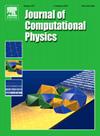CGKN: A deep learning framework for modeling complex dynamical systems and efficient data assimilation
IF 3.8
2区 物理与天体物理
Q2 COMPUTER SCIENCE, INTERDISCIPLINARY APPLICATIONS
引用次数: 0
Abstract
Deep learning is widely used to predict complex dynamical systems in many scientific and engineering areas. However, the black-box nature of these deep learning models presents significant challenges for carrying out simultaneous data assimilation (DA), which is a crucial technique for state estimation, model identification, and reconstructing missing data. Integrating ensemble-based DA methods with nonlinear deep learning models is computationally expensive and may suffer from large sampling errors. To address these challenges, we introduce a deep learning framework designed to simultaneously provide accurate forecasts and efficient DA. It is named Conditional Gaussian Koopman Network (CGKN), which transforms general nonlinear systems into nonlinear neural differential equations with conditional Gaussian structures. CGKN aims to retain essential nonlinear components while applying systematic and minimal simplifications to facilitate the development of analytic formulae for nonlinear DA. This allows for seamless integration of DA performance into the deep learning training process, eliminating the need for empirical tuning as required in ensemble methods. CGKN compensates for structural simplifications by lifting the dimension of the system, which is motivated by Koopman theory. Nevertheless, CGKN exploits special nonlinear dynamics within the lifted space. This enables the model to capture extreme events and strong non-Gaussian features in joint and marginal distributions with appropriate uncertainty quantification. We demonstrate the effectiveness of CGKN for both prediction and DA on three strongly nonlinear and non-Gaussian turbulent systems: the projected stochastic Burgers–Sivashinsky equation, the Lorenz 96 system, and the El Niño-Southern Oscillation. The results justify the robustness and computational efficiency of CGKN.
求助全文
约1分钟内获得全文
求助全文
来源期刊

Journal of Computational Physics
物理-计算机:跨学科应用
CiteScore
7.60
自引率
14.60%
发文量
763
审稿时长
5.8 months
期刊介绍:
Journal of Computational Physics thoroughly treats the computational aspects of physical problems, presenting techniques for the numerical solution of mathematical equations arising in all areas of physics. The journal seeks to emphasize methods that cross disciplinary boundaries.
The Journal of Computational Physics also publishes short notes of 4 pages or less (including figures, tables, and references but excluding title pages). Letters to the Editor commenting on articles already published in this Journal will also be considered. Neither notes nor letters should have an abstract.
 求助内容:
求助内容: 应助结果提醒方式:
应助结果提醒方式:


